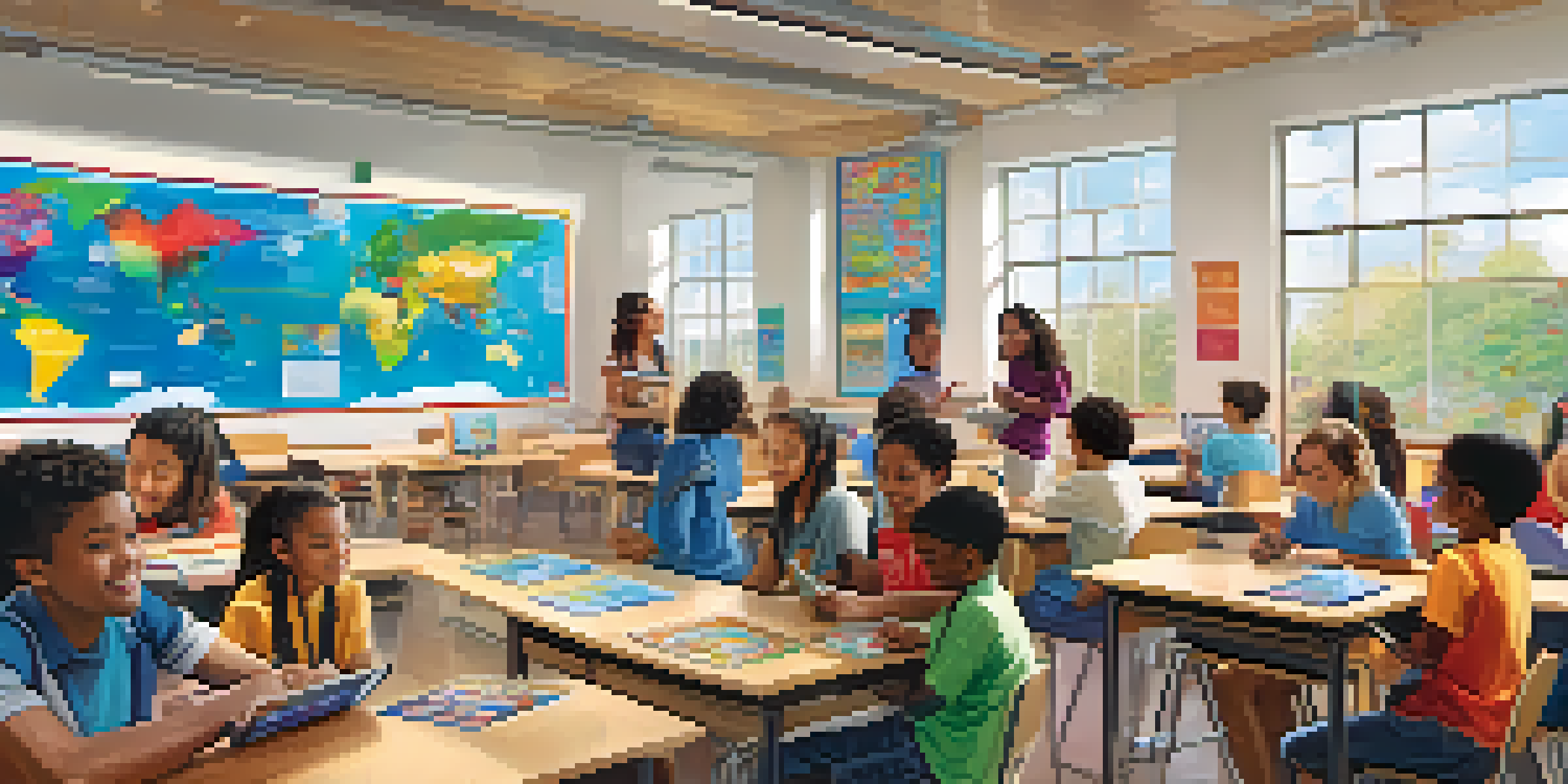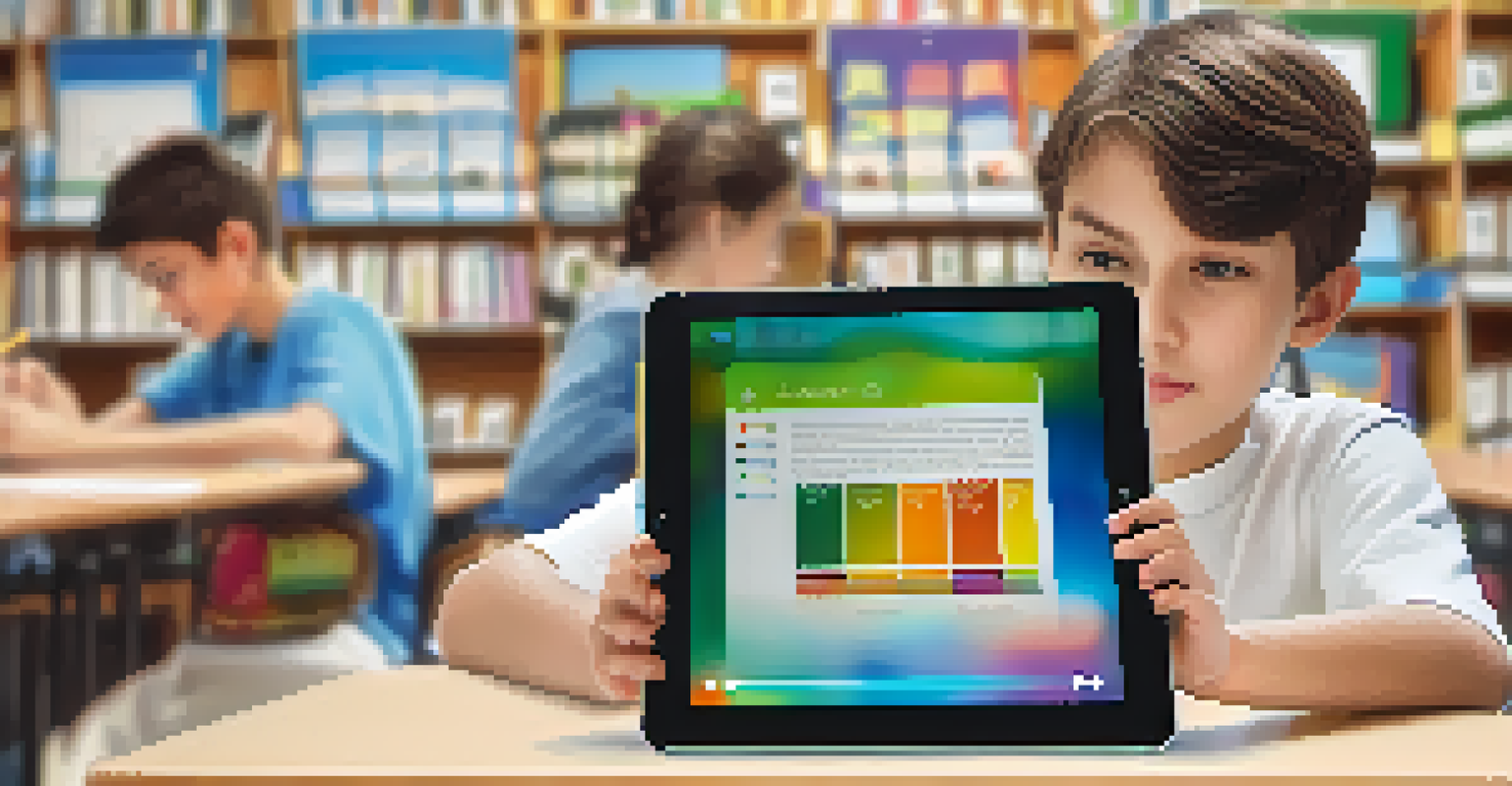The Interplay Between Adaptive Learning and Neurodiversity

Understanding Adaptive Learning and Its Benefits
Adaptive learning is an educational approach that personalizes learning experiences based on individual needs. By leveraging technology and data analytics, it tailors content, pace, and format to fit each learner's unique style. This method can significantly enhance engagement and outcomes, especially for students who may struggle in traditional learning environments.
The greatest gift of education is the ability to think critically and creatively, which is essential for embracing neurodiversity.
For example, a student who excels in visual learning may benefit from interactive graphics, while another who prefers auditory input might thrive with podcasts. This flexibility allows learners to grasp concepts more effectively, leading to improved retention and application of knowledge. Ultimately, adaptive learning creates a more inclusive classroom experience, catering to a variety of learning preferences.
As we delve deeper, it’s essential to consider how adaptive learning intersects with neurodiversity—a term that encompasses a range of cognitive variations, including autism, ADHD, and dyslexia. Understanding this interplay can lead to more effective strategies in educational settings, ensuring that all students receive the support they need.
Defining Neurodiversity and Its Importance in Education
Neurodiversity recognizes that variations in brain functioning are natural and should be embraced rather than pathologized. This perspective shifts the focus from 'fixing' individuals to creating environments that allow everyone to thrive based on their unique strengths and challenges. In education, acknowledging neurodiversity is crucial for fostering a sense of belonging and acceptance among students.

For instance, a neurodiverse student might possess exceptional strengths in creativity or problem-solving but face challenges in traditional exam settings. By embracing neurodiversity, educators can create tailored assessments and learning paths that highlight these strengths, encouraging students to feel confident in their abilities. This approach not only benefits neurodiverse learners but enriches the entire classroom dynamic.
Adaptive Learning Personalizes Education
Adaptive learning tailors educational experiences to meet individual needs, enhancing engagement and retention.
Ultimately, recognizing and valuing neurodiversity in educational settings can lead to more inclusive practices and policies. By understanding how different brains work, educators can become champions for all students, paving the way for a more equitable learning environment.
How Adaptive Learning Supports Neurodiverse Learners
Adaptive learning systems are designed with flexibility at their core, making them particularly beneficial for neurodiverse learners. These systems can adjust content delivery based on a learner's progress, allowing for personalized pacing and review of challenging concepts. This is especially helpful for students who may need more time to process information or require multiple formats to grasp a topic fully.
Inclusive education is not a privilege; it's a fundamental right that ensures all students have the opportunity to learn and thrive.
For example, a student with ADHD might find it challenging to focus for long periods. An adaptive learning platform can break lessons into shorter, engaging segments that cater to their attention span, while also integrating gamified elements to maintain interest. This targeted approach not only enhances learning but also minimizes frustration, helping students develop confidence.
Moreover, adaptive learning can provide immediate feedback, which is essential for students who thrive on understanding their progress in real time. This instant reinforcement encourages them to take ownership of their learning journey, promoting autonomy and self-advocacy—a critical skill for all learners.
The Role of Technology in Adaptive Learning
Technology plays a pivotal role in the success of adaptive learning environments. Through sophisticated algorithms and data analytics, educational platforms can gather insights into a student's learning habits and preferences. This allows for real-time adjustments to the learning path, ensuring that the content remains relevant and engaging for each individual.
Consider a scenario where a neurodiverse student struggles with a specific math concept. An adaptive learning system can identify this gap and provide additional resources tailored to that student's learning style, whether through videos, interactive exercises, or one-on-one tutoring. By harnessing technology, educators can create a more responsive and supportive learning atmosphere.
Neurodiversity Enriches Learning Environments
Embracing neurodiversity allows educators to create inclusive practices that recognize and celebrate varied cognitive strengths.
Furthermore, the use of assistive technologies, such as text-to-speech software or organizational apps, can complement adaptive learning strategies. These tools empower neurodiverse students to navigate their learning experiences more effectively, fostering independence and enhancing overall academic performance.
Challenges in Implementing Adaptive Learning for Neurodiversity
While the benefits of adaptive learning for neurodiverse students are clear, several challenges can arise during implementation. One significant hurdle is the need for adequate training and resources for educators, who must understand both the technology and the specific needs of neurodiverse learners. Without proper training, even the most advanced adaptive learning systems may fall short of their potential.
Additionally, there can be resistance to change within traditional educational frameworks. Some institutions may be hesitant to adopt new technologies or teaching methods, fearing disruption or the learning curve associated with implementation. Overcoming this inertia requires a commitment from school leaders to prioritize inclusivity and invest in professional development.
Lastly, ongoing assessment and feedback are essential to ensure that adaptive learning tools are effectively meeting the needs of neurodiverse students. Regular evaluations help identify areas for improvement and ensure that the adaptive learning environment continues to evolve in response to student feedback and performance.
Success Stories of Adaptive Learning and Neurodiversity
Across the globe, there are numerous success stories demonstrating the power of adaptive learning in supporting neurodiverse students. One inspiring example comes from a school that implemented an adaptive reading platform, which allowed students with dyslexia to access content through various formats, such as audiobooks and interactive texts. These resources significantly improved their reading skills and confidence.
Another notable case involved a student with autism who struggled in conventional classroom settings. By utilizing an adaptive learning system, educators were able to customize lessons to align with the student's interests and strengths. This tailored approach not only improved academic performance but also fostered a love for learning and increased social interaction among peers.
Technology Enhances Adaptive Learning
Sophisticated technology enables real-time adjustments in learning paths, making education more responsive to students' unique preferences.
These success stories highlight the transformative potential of adaptive learning when combined with a genuine understanding of neurodiversity. As more educators share their experiences and best practices, we can continue to build a supportive educational landscape that champions all learners, regardless of their neurological differences.
Looking Ahead: The Future of Adaptive Learning and Neurodiversity
The future of education lies in embracing diversity and leveraging technology to create inclusive environments. As adaptive learning systems continue to evolve, we can expect even more sophisticated tools that cater to the unique needs of neurodiverse learners. This evolution will rely on continued collaboration among educators, technologists, and neurodiversity advocates to ensure that all voices are heard and represented.
Moreover, as awareness of neurodiversity grows, educational policies may shift to prioritize inclusive practices at all levels. This could lead to increased funding for adaptive learning technologies and professional development, enabling schools to better support neurodiverse students. The goal is to create an educational landscape where every learner has the opportunity to excel.

In summary, the interplay between adaptive learning and neurodiversity holds great promise for the future of education. By continuing to prioritize inclusivity and innovation, we can ensure that all students—regardless of their neurological makeup—are equipped with the tools they need to thrive in an ever-changing world.